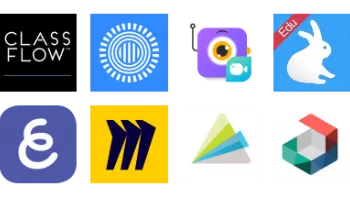Take a look inside 7 images
VEED
Pros: Easily navigable. Useful to both novice and experienced creators.
Cons: Free educator accounts require providing personal info. They also aren't always available.
Bottom Line: This platform is full of features that blend video creation and screencasting, helping teachers expand and differentiate their lessons.
While there are so many options available for teachers to create videos and screen recordings, VEED seems to have all the right features. It can be used for screencasts, remote lessons, flipped classroom videos, and multimedia presentations for students. It can also be used for video hosting. Introduce a topic by presenting a short screencast with slides. Supplement lessons with additional video explanations, or promote media literacy by adding questions to existing videos. For example, edit a popular YouTube video by highlighting information or adding questions that encourage critical thinking. You can also use the dedicated video cutter to seamlessly select portions of videos to edit into presentations. In an age of disinformation, VEED can be a powerful tool for teaching students how to question what's being circulated and push back against incorrect or incomplete information.
Teachers who want to flip the script can also allow students to create videos using VEED's free version. Whether students create their own content or edit videos they find online, it can be an eye-opening experience into how videos shape perception.
VEED is a video creation and screencasting site that allows users to create screen recordings, present slides, and edit existing videos, including those they upload from YouTube. Educators can sign up for a free account online, but be aware that the site requires some personal information, including employment verification and one or more days of wait time before being approved. And VEED stops accepting applications regularly, so you're not guaranteed to get a free subscription.
Users can present on camera alongside uploaded presentations, edit videos they upload via YouTube links, or create engaging screen recordings. A sidebar contains helpful tools such as a teleprompter, auto-generated closed captions, filters, text, and various other screen elements to add flair to content. Users can also invite others to collaborate on projects. The dashboard lets teachers organize videos into folders. Note that the platform supports only PDFs for upload, so if the presentations you export contain interactive elements or transitions, some of these will be lost.
VEED can help teachers present material in ways that are engaging and meaningful for students. It combines features of slide presentations, screencasts, and video-based teaching, so it's easy for educators to create content for flipped, remote, or in-person learning. In addition to presenting video to kids, it has features like one-click subtitles to allow teachers to reach a wider audience with barely any additional effort. VEED doesn't absolve teachers of the responsibility to create meaningful lessons, but it does simplify the process of supplementing those lessons with videos that promote critical thinking, media literacy, and comprehension.
Videos can be as simple or as complex as you want them to be. If you're going to add multiple videos or transitions, getting used to the timeline may be an adjustment for those with no experience in video editing.
















